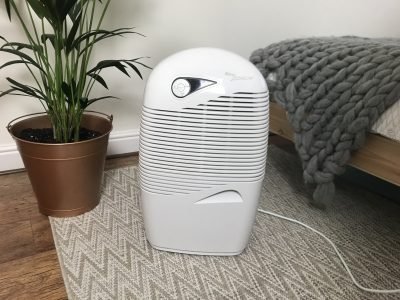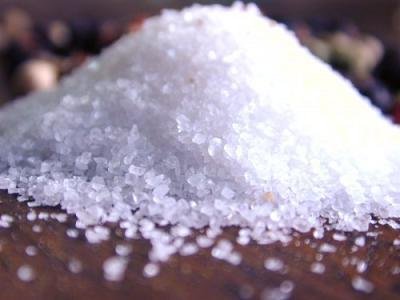Introduction
You know that awful feeling. The air feels thick and wet, like wading through a batch of pea soup. The downside is you’re not outside, but you’re actually inside your own home. The air is damp, you feel like you’re smothered, and you just want the moisture to be gone. Thankfully, you live in a time where it’s now easy to remove moisture from the air. All you need to do is understand how humidity occurs and then invest in the right equipment and products.
Atmospheric Humidity
Moisture in the air tends to be water droplets trapped in the atmosphere. These are in the form of water vapor, which can stem from a variety of causes indoors and outdoors. While outside tends to be muggy and humid around water sources and during particularly nasty summer days, the indoors suffers from moisture in the air just as much. The most common place to experience this phenomenon is the bathroom, where a combination of heat, running water, and a closed environment produce dampness.
Naturally, people want to eliminate the moisture. Indoors, moisture in the air causes tons of problems both for people but also in the rooms affected by the water vapor. Individuals like yourself might struggle to breathe and could experience clogged sinuses and trouble with asthma since the air is thick and difficult to breathe.
Your walls and furniture, meanwhile, is now more susceptible to mold, mildew, and the reproduction of bacteria. Why? Because those organisms love warm, wet places where they can thrive. These growths can also be bad news for you since you end up inhaling the particles they produce, which can cause even more difficulty breathing and even infections depending on how much of the growth ends up in the air.
What Is a Dehumidifier?
So, what can be done about moisture in the air?
You’re in luck that you live in modern times since this means you can now go to a store – or even shop online from home – and get a dehumidifier. A dehumidifier is a machine that pulls the air into itself, runs it through several filters to eliminate water vapor, and then pushes the clean, dry air back out. The water vapor is liquified and stored in a small container in the device that can be emptied. Do not try to drink or use the liquid – it is considered greywater, or contaminated fluid.
The Types of Dehumidifiers
There are tons of dehumidifiers designed for every conceivable environment. The most common style is a simple electric machine that can be plugged into an outlet and allowed to run. These are meant to be indoors and can cover an area between 100-300 sq. ft.
Another style of dehumidifier to remove moisture from the air is a device designed to sit outdoors. You obviously can’t remove the water vapor from the entire atmosphere, but you can treat a 100-400 sq. ft. radius so you can enjoy a nice lemonade on the patio with being smothered by the pea soup air.
The final most common variety is a spray dehumidifier, which removes moisture from the air using the physical properties of the water. Basically, the dehumidifier sprays chilled water and dry air into the environment, which eventually reduces the moisture in the environment through a chemical – but completely safe – process.
Is There Another Way?
There are a variety of other methods you can use to remove moisture from the air besides a dehumidifier. One of the biggest ones is to improve indoor ventilation so moisture does not become concentrated in one room. Again, this is an issue in bathrooms, which tend to be closed off and filled with running water and heat. If there is a window in the bathroom, open it before, during, and after showers to keep the humidity comfortable. You can also add more fans and vents throughout the home to make sure water vapor moves out and doesn’t stay in.
Another simple trick is to check the air conditioning. Most units have multiple settings, and one of them will allow you to move a switch to “Dry,” which helps suck moisture out of the environment and give you fresh, dry air. You can also avoid running the shower, dishwasher, and dryer for long periods of time, and can even make your own DIY dehumidifier.
DIY Dehumidifier Instructions
The simplest DIY dehumidifier requires four items: a hand drill, some rock salt, and two five gallon buckets. Using the drill, put a bunch of holes in the bottom of one of the buckets and then place it inside the undamaged one. Fill the top bucket with a layer of rock salt about 1-2 in. thick. Leave the bucket in the room suffering from too much moisture in the air.
Over a few days, you’ll start to see less water vapor in the air and will discover water in the undamaged bucket. Basically, the rock salt pulls the moisture out of the air and deposits it in the bucket, where it is unable to return to the atmosphere. This is a cheap and easy way to dehumidify the environment!
Conclusion
Removing moisture from the air is a simple process so long as you know what you’re doing. You can either choose to purchase a machine and simply plug it in, or you can make some adjustments to the household to help improve general airflow. If you’re really crafty or just interested in DIY projects, you can even make your own dehumidifier. All in all, removing moisture from the air shouldn’t take long, and then you’ll have a much easier time enjoying your home.
What’s Next
Now that you know how to remove moisture from the air, you can focus on improving other areas of your life and home. For more informative guides like this one, as well as tips, tricks, and reviews, you can visit our homepage. We know we have enough content to keep you informed and entertained for many days to come.
We also suggest that you check out our reviews of the best 95-pint dehumidifier models on the market, if you’re looking to get serious about managing humidity.


